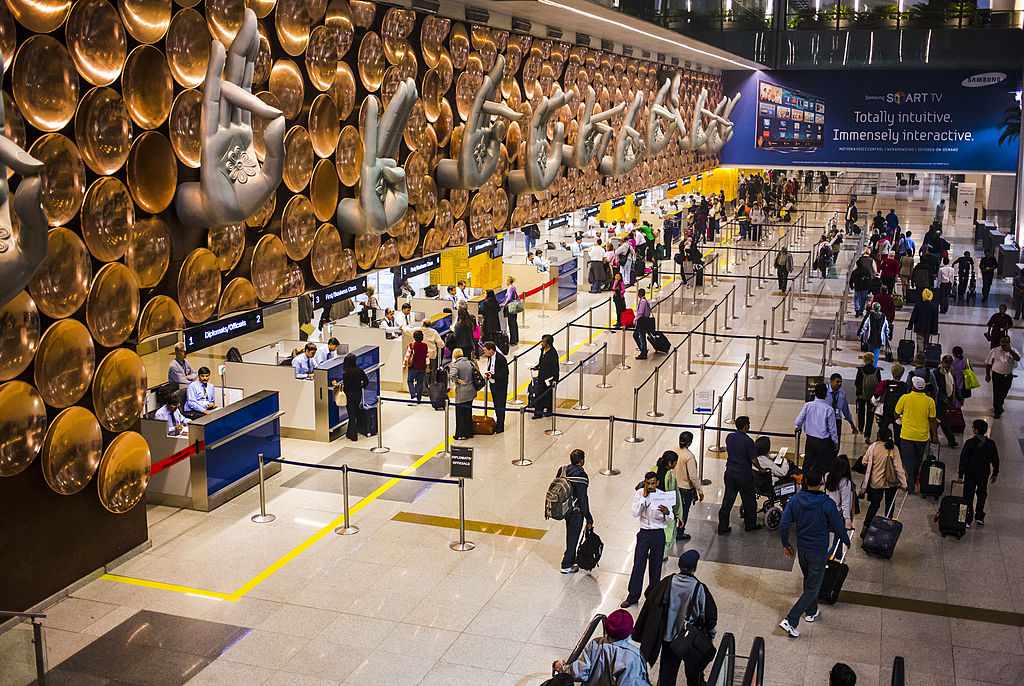
Improving Passenger Experience through Smart Airport Design
22-Jul-2024
The modern airport landscape is undergoing a significant transformation. Driven by technological advancements and a growing focus on passenger experience, the concept of the "smart airport" is rapidly evolving. This article explores how innovative design principles, coupled with cutting-edge technologies, are reshaping t he way passengers navigate airports, creating a more efficient, stress-free and ultimately, enjoyable travel experience.
The Challenges of Traditional Airport Design
Traditional airport design often prioritizes functionality over passenger experience. Long queues, confusing signage and inefficient layouts can lead to frustration and delays. Additionally, the sheer volume of passengers passing through airports creates logistical challenges, particularly during peak travel times.
The Rise of the Smart Airport
Smart airports leverage a range of technologies and design strategies to address these challenges. Here's a closer look at some key elements:
- Digital Transformation: Mobile apps empower passengers to manage their journeys seamlessly. From check-in and bag drop to real-time flight information and personalized wayfinding, mobile applications streamline the travel process. Self-service kiosks further enhance convenience, reducing reliance on physical check-in counters.
- Biometric Identification: Biometric technology, such as facial recognition and iris scanning, can expedite security screening and boarding processes. This not only reduces wait times but also fosters a more secure environment.
- Internet of Things (IoT) Integration: A network of sensors strategically placed throughout the airport gathers real-time data on passenger flow, resource utilization and environmental conditions. This data empowers airport authorities to optimize operations, identify potential bottlenecks and adjust resource allocation accordingly.
- Data-Driven Decision Making: By analyzing passenger data, airports can gain valuable insights into traveler behavior. This knowledge can inform design decisions, such as optimizing terminal layouts for smoother passenger flow, strategically positioning retail outlets based on passenger demographics and allocating staff resources efficiently.
- Enhanced Connectivity: Ubiquitous and reliable Wi-Fi access is no longer a luxury but a necessity. Passengers can stay connected with loved ones, access work emails, or even stream entertainment content during their journeys.
Designing for Passenger Comfort and Well-being
Smart airport design goes beyond technology. Creating a comfortable and welcoming environment plays a crucial role in passenger experience. Here are some key considerations:
- Natural Light and Open Spaces: Spacious terminals with ample natural light can significantly reduce feelings of claustrophobia and stress commonly associated with crowded airports.
- Biophilic Design Principles: Integrating elements of nature, such as indoor plants or water features, can create a calming and serene atmosphere.
- Wayfinding and Signage: Clear, intuitive signage is essential for easy navigation. Interactive digital displays can further enhance wayfinding, providing real-time directions and updates.
- Retail and Dining Options: A curated selection of retail stores and diverse dining options caters to different traveler preferences and budgets.
- Relaxation Amenities: Dedicated relaxation areas with comfortable seating and charging stations allow passengers to de-stress and recharge before their flights.
The Benefits of Smart Airport Design
Investing in smart airport design offers a multitude of benefits:
- Improved Passenger Experience: Reduced wait times, easier navigation and a comfortable environment contribute to a more positive travel experience, leading to increased passenger satisfaction and loyalty.
- Operational Efficiency: Real-time data analysis allows for optimized resource allocation, leading to smoother operations and reduced costs.
- Increased Revenue: Strategic airport design can enhance retail sales and other non-aeronautical revenue streams.
- Enhanced Security: Biometric identification and data-driven security protocols can strengthen airport security measures.
The Future of Smart Airports
The future of smart airports is brimming with exciting possibilities. Artificial intelligence (AI) will play a more prominent role, further personalizing the passenger experience. Imagine AI-powered chatbots providing real-time travel assistance or robots assisting with baggage handling.
Additionally, augmented reality (AR) can revolutionize wayfinding, overlaying directions directly onto the passenger's smartphone camera view. The integration of smart wearables could allow for seamless check-in and security clearance, eliminating the need for physical documentation.
Conclusion
Smart airport design is no longer a futuristic concept but a present-day reality. By embracing cutting-edge technologies and prioritizing passenger experience, airports can transform themselves into efficient, welcoming hubs, fostering a positive journey for travelers worldwide. As the industry continues to evolve, the possibilities for innovation and enhanced travel experiences are limitless.
If you need any services, drop us a mail at Rohitkumar.Singh@gmrgroup.in or get in touch with us at +919717199753.
